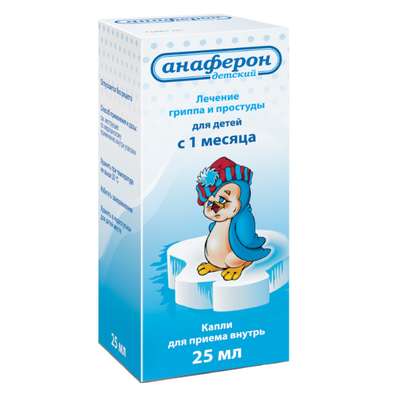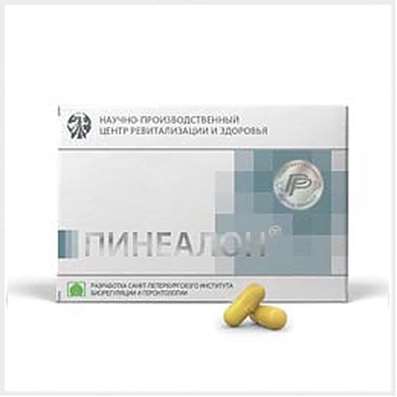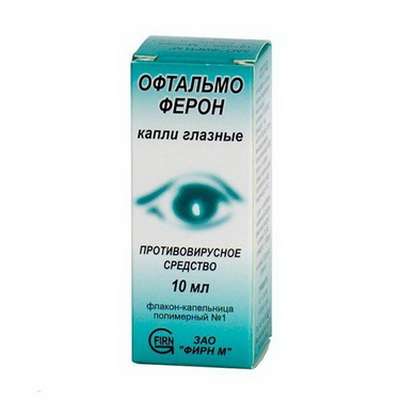Instruction for use: Mesaton
I want this, give me price
Trade name of the drug – Mesaton
ATX code C01CA06 Phenylephrine
Pharmacotherapeutic group:
Alpha-adrenoceptor agonists
The nosological classification (ICD-10)
A48.3 Toxic shock syndrome
Bacteria-nomic shock, Infectious-toxic shock, intoxication syndrome, Toxic-infectious shock, Toxic shock, Chronic intoxication at diseases of the gastrointestinal tract, Chronic intoxication with gastrointestinal infections, endotoxin shock
I95 Hypotension
hypotension, Age hypotension, arterial Hypertension, Hypotonic disease, hypotonic reaction, postural hypotension, Symptomatic hypotension, Essential hypotension
I99 Other and unspecified disorders of the circulatory system
angiopathy, Arterial angiopathy, Atherosclerotic angiopathy, Hemodynamic right heart defects, Hemodynamic defect of the right heart, coronary angiopathy, Infringement of blood circulation, Violation of circulation, Violation microcirculation in organs and tissue, Peripheral circulatory disorders, Disorders of the peripheral circulation in the extremities, circulatory failure, Hemodynamic instability occlusion of arteriovenous origin, Acute circulatory failure, Psevdostenokardicheskie state, Psevdostenokardicheskoe disorder, circulatory disorder, Cardiovascular diseases, Vascular insufficiency, Thrombosis arteriovenous shunt, Thrombosis with prosthetic heart valves, Deterioration of blood circulation in the pelvic organs, Functional failure of the cardiovascular system, Functional disorders of the cardiovascular system, Chronic arterial insufficiency, Chronic heart failure, Age-related vascular disease, The risk of thrombosis
J30.0 Vasomotor rhinitis
Rhinitis chronic vasomotor neurovegetative
J30.4 Allergic rhinitis, unspecified
Rninitis chronicles vasumotor neurovegetative
R57.9 Shock, unspecified
Pain shock, hemolytic shock, Neurogenic shock, Shock, state of shock
T79.4 Traumatic shock
Hemorrhagic shock, Crush syndrome, hemorrhagic shock, postoperative shock, post-traumatic shock, traumatic shock, hemorrhagic shock and encephalopathy syndrome
Z100.0 * Anesthesiology and premedication
nasogastric intubation, The relaxation of skeletal muscles, Controlled breathing under anesthesia, Anesthesia, Anesthesia in ENT practice, Anaesthesia in Dentistry, Hypotension during spinal anesthesia, ataralgesia, Basic anesthesia, Fast anesthesia, Introduction to anesthesia, Induction, inhalation anesthesia, Inhalation anesthesia for large and small surgery, Induction and maintenance of general anesthesia, intraligamentarnaya anesthesia, tracheal intubation, caudal anesthesia, Caudal blockade, mixed anesthesia, Short-term anesthesia, Short-term infiltration anesthesia in surgery, Short-term local anesthesia, Spinal anesthesia, Local anesthesia, Local infiltration anesthesia, Local surface anesthesia, monokomponentny anesthesia, anesthesia, Neingalyatsionnyh anesthesia for operative delivery, Immediate pain relief, general anesthesia, General anesthesia with short-term surgical interventions, General anesthesia, Period premedication, Surface anesthesia in ophthalmology, Maintenance of anesthesia, anocithesia, conduction anesthesia, Regional anesthesia, mixed anesthesia, Spinal anesthesia, spinal anesthesia, Spinal anesthesia, permeation anesthesia, epidural anesthesia, IVL, Artificial hibernation, Short-term muscle relaxation, Miorelaxation, Miorelaxation during mechanical ventilation, Miorelaxation during surgery, Miorelaxation in operations, Miorelaxation during mechanical ventilation, Excitation before surgery, cardioplegia, Preoperative period
Composition
Injection 1 ml
active substance:
Phenylephrine Hydrochloride 10 mg
Other ingredients: glycerol; water for injections
Description
Clear, colorless liquid.
Pharmacological Properties of MesatonPharmachologic effect
vasoconstrictor, alpha-agonists
pharmacodynamics
pharmacodynamics
Alpha1-agonists, have little effect on beta-adrenergic receptors of the heart. It is not a catecholamine (it contains only one hydroxyl group in aromatic nucleus). Causes arteriolar narrowing and increased blood pressure (with a possible reflex bradycardia). Compared with norepinephrine and epinephrine less dramatically increases the blood pressure, but there are more than long-term (less exposed to the catechol-O-methyltransferase). There is no increase in cardiac output.
The action begins immediately after injection and continues for 5-20 minutes (after the on / in the introduction), 50 minutes (by subcutaneous injection), 1-2 hours (after the / m).
Pharmacokinetics
It is metabolized in the liver and the gastrointestinal tract (without the participation of catechol-O-methyltransferase). Excreted by the kidneys as metabolites.
Indications for Mesaton
hypotension;
shock states (including traumatic, toxic shock syndrome);
vascular insufficiency (including on the background of vasodilators overdose);
as a vasoconstrictor during local anesthesia;
vasomotor and allergic rhinitis.
Contraindications for Mesaton
Hypersensitivity to the drug;
hypertrophic obstructive cardiomyopathy;
pheochromocytoma;
ventricular fibrillation.
Precautions: metabolic acidosis, hypercapnia, hypoxia, atrial fibrillation, angle-closure glaucoma, hypertension, hypertension in the pulmonary circulation, hypovolemia, severe aortic stenosis, acute myocardial infarction, tachyarrhythmia, ventricular fibrillation; occlusive vascular disease (including history) - Arterial thrombosis, atherosclerosis, thromboangiitis obliterans (Buerger), Raynaud's disease, vascular propensity to spasms (including with frostbite), diabetic endarteritis, thyrotoxicosis, diabetes mellitus, porphyria, lack of glucose-6-phosphate dehydrogenase, concomitant use of monoamine oxidase inhibitors; general anesthesia (ftorotanovy), renal impairment, advanced age, the age of 18 years (effectiveness and safety have been established).
Pregnancy and breast-feeding
There are no adequate and well-controlled studies in humans and animals on the effect of the drug on pregnant women has not been given to the allocation of the drug in breast milk is not available, on the basis of what during pregnancy and lactation use of the drug is possible with caution, only on strict conditions and under the supervision of a physician by evaluating the ratio of benefits and risks.
Side effect of Mesaton
From the CCC: raising blood pressure, heart rate, ventricular fibrillation, arrhythmia, bradycardia, cardialgia.
CNS: dizziness, anxiety, insomnia, anxiety, weakness, headache, tremor, paresthesia, seizures, bleeding in the brain.
Other: pale skin, ischemia of the skin at the injection site, in rare cases, possible necrosis and scab formation in contact with the tissues or subcutaneous injection, and allergic reactions.
Interaction
Diuretics and antihypertensive drugs. Mezaton reduce the antihypertensive effect of diuretics and antihypertensive drugs (methyldopa, mecamylamine, guanadrel, guanethidine).
Phenothiazines, alpha-blockers (phentolamine) reduce the hypertensive effect.
MAO inhibitors (furazolidone, procarbazine, selegiline), oxytocin, ergot alkaloids, tricyclic antidepressants, Methylphenidate, adrenostimulyatorov increase pressor effect of phenylephrine and arrhythmogenic.
Beta-blockers decrease the cardio activity on the background of reserpine possible hypertension (as a result of the depletion of catecholamines stocks adrenergic endings increases sensitivity to adrenoceptor agonists).
Inhaled anesthetics (chloroform, enflurane, halothane, isoflurane, methoxyflurane) increase the risk of serious atrial and ventricular arrhythmias, as dramatically increase the sensitivity of the myocardium to sympathomimetics.
Ergometrine, ergotamine, metilergometrin, oxytocin, doxapram increase the severity of vasoconstrictor effect.
Nitrates. Mezaton reduces nitrate antianginal effect, which in turn can reduce the pressor effect sympathomimetic and risk of hypotension (possibly simultaneous application, depending on achieving the desired therapeutic effect).
Thyroid hormones increase the (mutually) effect and the associated risk of coronary heart disease (especially in coronary atherosclerosis).
Dosage and Administration
Intravenously, the jet slowly.
During collapse - 0,1-0,3-0,5 ml of 1% solution diluted in 20 ml 5% dextrose or 0.9% sodium chloride solution. If necessary, repeat administration.
Intravenous drip - 1 ml of a 1% solution in 250-500 ml 5% dextrose.
Subcutaneously or intramuscularly.
Adults - 0.3-1 ml of a 1% solution 2-3 times a day; children older than 15 years with arterial hypotension during spinal anesthesia - 0.5-1 mg / kg.
To narrow the blood vessels of the mucous membranes and reduce inflammation smeared or buried (the concentration of the solution - 0.125, 0.25, 0.5, 1%).
When the local anesthetic is added 0.3-0.5 ml 1% solution of 10 ml of the anesthetic solution.
The maximum dose for adults. Subcutaneously and intramuscularly: single - 10 mg daily - 50 mg; IV: single - 5 mg daily - 25 mg.
Overdose
Symptoms: ventricular premature beats, short paroxysms of ventricular tachycardia, a feeling of heaviness in the head and limbs, a significant increase in blood pressure.
Treatment: in / with the introduction of alpha-blockers (phentolamine) and beta-blockers (for heart rhythm disturbances).
special instructions
During treatment should monitor the ECG, blood pressure, cardiac output, blood flow in the limbs, and the injection site. In patients with hypertension in the case of medical collapse enough to maintain garden at a level lower than the usual 30-40 mmHg Before the start of or during the treatment of states of shock obligatory correction of hypovolemia, hypoxia, acidosis, and hypercapnia.
The sharp increase in blood pressure, bradycardia or tachycardia, persistent cardiac arrhythmias require discontinuation of treatment.
To prevent re-BP reduction after the drug dose should be reduced gradually, especially after prolonged infusion. The infusion is resumed If the garden is reduced to 70-80 mm Hg. Art.
It should be borne in mind that the use of vasoconstrictors during labor to correct hypotension or as an additive to local anesthetics in the background means of labor-inducing activity (vasopressin, ergotamine, ergometrine, metilergometrin), may lead to a persistent increase in blood pressure in the postpartum period.
With age, the reduced number adrenoceptor sensitive phenylephrine. MAO Inhibitors, increasing the pressor effect of sympathomimetic, may contribute to the occurrence of headaches, arrhythmia, vomiting, hypertensive crisis, so the patients receiving MAO inhibitors during the previous 2-3 weeks, the dose should be reduced by sympathomimetics.
Effects on ability to engage in dangerous activities. During treatment should not engage in dangerous activities that require speed motor and mental reactions (including driving).
release Form
Injectable solution 10 mg / ml. 1 ml ampoules invested of 10 pieces with a lancet or ampoule cutting ceramic disc in a pile of cardboard.
Storage conditions of Mesaton
The temperature is not higher than 25 ° C.
Keep out of the reach of children.
Shelf life of Mesaton
3 years.
Do not use beyond the expiration date printed on the package.
Available with prescription.

 Cart
Cart





